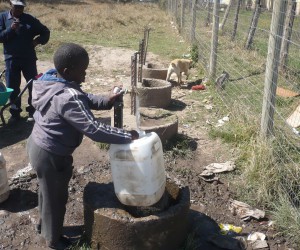As part of the Accelerated Schools Infrastructure Delivery Initiative (ASIDI), South Africa’s leading black-owned consulting engineering firm, GIBB is involved in the upgrade of six remote schools in Transkei’s Libode District. The six schools include, Victor Poto, Bungu, Smuts Ndamase, Zibungu, Mvume Springs and Tyityane.
The Department of Basic Education (DBE) has played a critical role in impacting the lives of the people in the communities with a key focus on socio-economic development.
According to GIBB Technical Executive: East London, Dave Clark, there was a basic need to replace inappropriate structures at the six schools with new buildings., Some of the mega schools will also be provided with a school hall. The schools are all being designed to be wheelchair friendly.
GIBB in a Joint Venture (JV) with MDA Architects, TimeSpace Architects, Imvelo Quantity Surveyors, Controlab, NPM and Amanz’abantu Services developed the Schools Development Plans (SDPs) for approval by the DBE. The Consortium then undertook the design and tender documentation. This all took place on an accelerated programme of four month duration. The construction timeframe of nine months, specified by the DBE, is also very tight. The project, in its entirety, is valued at some R250 million.
Many of the former Transkei schools had primary schools from Grade R up to Grade 9 and senior secondary schools consisted of Grades 10 – 12. “According to the DBE, Grade 8 and 9 should now form a part of a secondary school. The schools in the district needed to be revamped to cater for this change,” said Clark.
The challenge facing the consortium in this contract was to work on site must take place while classes were in progress. Clark highlighted that temporary structures to house the students and academic staff, consisting of wood and iron, were constructed on the schools’ grounds to ensure minimal disruption to learners.
“With sustainability being the way of the future, our client asked us to investigate green technology in the scope of work. To this end, the roof has been designed to allow energy efficient natural lighting and ventilation. This is done using louvers and roof lights through specially designed roof trusses,” added Clark.
In building smarter schools which included cooking facilities, hand basins and science labs, a cost effective method had to be found to dispose of grey water. An innovative system using Vetiver grass has been designed.
“Vetiver Grass has the ability to absorb the phosphorous and nitrogen. In addition the close-growingclumps of grass slows down the velocity of the water and increases the amount that can be absorbed by the soil,” said Clark.






